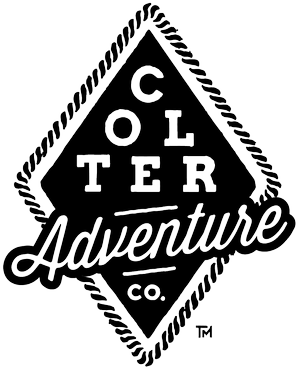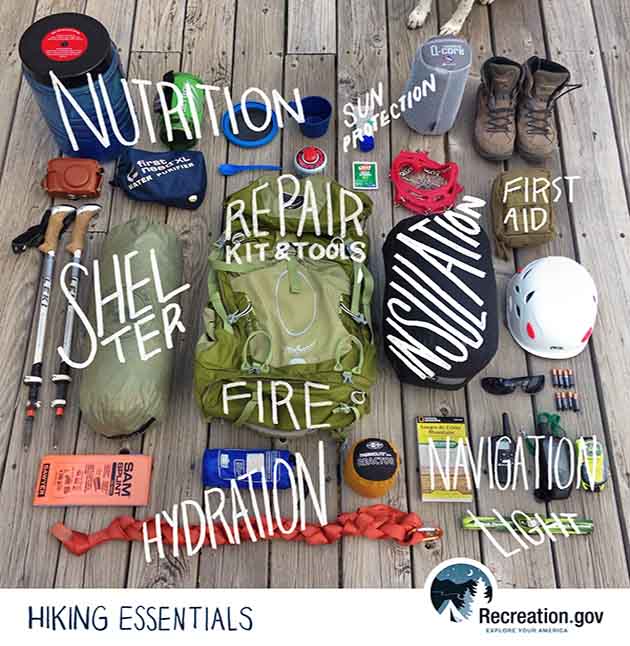As a Boy Scout, I had the ten essentials drilled into my head from a young age. To this day I don't even go to work without a more urban friendly version of the 10 essentials with me. And it's come in handy. A co-worker recently had a wardrobe malfunction and I was able to save the day with the basic sewing kit thats in my first aid kit. He said "of course you have a sewing kit..." Be prepared, baby.
As I've grown up and see other people on the trail, I've realized that not everyone has had that same training. I see people pretty far into the wilderness with just a water bottle and a pair of sunglasses. I feel a bit nervous for them and that nervousness has in part been the reason I decided to write about this subject.
The 10 essentials was originally created by a mountaineering group from Seattle in the 1930's. It is one of those things that is pretty timeless, and I don't see it needing much updating. There is of course some flexibility in how to choose to fulfill each need. Navigation, for instance, has come a long way since the 30's, but the principle remains.
The 10 Essentials:
1. MAP & COMPASS
Although there are many ways to navigate, I prefer the old fashioned way. GPS is nice, but batteries die and technology sometimes fails. A good map is a great tool. Especially the new ones with water proof, tear proof paper. It does require learning the skills to use a map well, but they are skills that will make your use of a GPS unit that much better. It's always good to have the old paper back up, just in case.
2. EXTRA FOOD
I generally bring enough food for the trip I'm planning on, and then an extra meal. Just in case. You never know when you might need (or want) to stay longer. What if you sprain your ankle and a 4 mile day hike suddenly takes an extra 6 hours to hobble back to the car? Make it high energy, high protein food like jerky, or trail mix.
3. HYDRATION
You can go three weeks without food, but only 3 days without water. Worst case scenarios aside, staying hydrated can help prevent other first aid emergencies like heat stroke, heat exhaustion, altitude sickness, and many more. Not to mention you'll just generally feel better and enjoy your trip more. Just don't go hiking without water.
4. EXTRA CLOTHES
Weather conditions can change pretty quickly. Especially if you are hiking for 4,000' to 10,000'. Or if you live in the Pacific Northwest. It's always only an hour away from raining around here. Best to carry a jacket or a poncho.
5. SUN PROTECTION
There are a lot of good ways to take care of this one. Sun screen, a hat, lip balm, long sleeves. To each their own. One of my favorite is a bandana. You can wrap it around your neck, or wear it pirate style if you forgot a hat. When it's a hot you can soak it in an ice cold creek first. Very refreshing.
6. MULTITOOL & KNIFE
I would never go hiking without a knife. I don't really go anywhere without a pocket knife, though. Make sure it's a good, sharp one. I have a favorite knife, personally. The Mora Companion. It's inexpensive, and probably the best quality I knife I have owned. It's not often those go together. It is very utilitarian. It's not fancy or the sort of thing that knife collectors are going to drool over. But it will get the job done. And no, I'm not being paid to say that.
7. FIRE
Again, there are many ways to go about this one. Stick with what you are the most comfortable. Remember, if you are going to need it, it's probably going to be an emergency. I love starting fires the primitive way. Flint and steel is my favorite. But in a 10 essentials kit, I usually have a lighter.
8. FLASHLIGHT
Lighting conditions change as quickly as weather conditions. An unexpected injury can add lots of time to a day hike. Make sure you don't get caught in the dark.
9. SHELTER
If you end up needing to stay the night unexpectedly, a shelter can be the difference between life and death. I'm not saying you should carry a 4 man tent with you where ever you go. But a space blanket can go a long way in an emergency. And they don't take up much more space than a deck of cards. A simple tarp and a length of paracord can make a lot of different shelters, as illustrated above. One might work better for you than another, depending on if you're working to stay warm, dry, or cool.
10. FIRST AID KIT
A first aid kit is another customizable thing depending on your personal needs. I suggest looking through yours every now and then to make sure you aren't of bandages and that the medications in it aren't 6 years expired.
Do you have a 10 essentials kit you take on day hikes, hunting trips, or general adventures? I'd love to hear if you have any specific items you won't leave home without.











